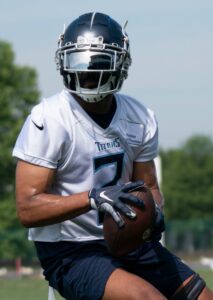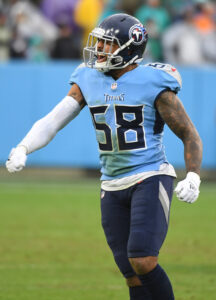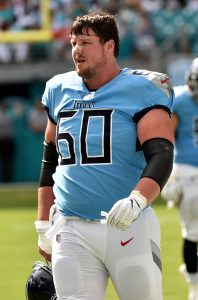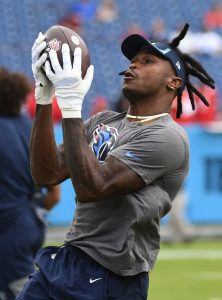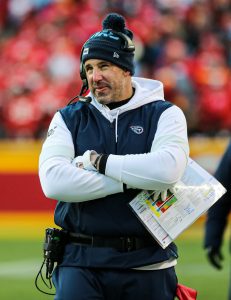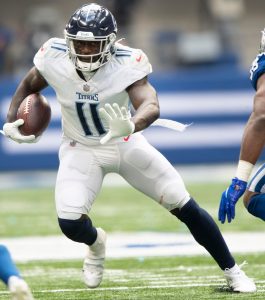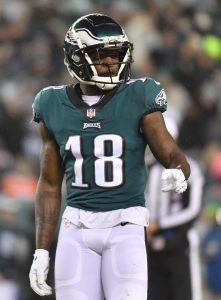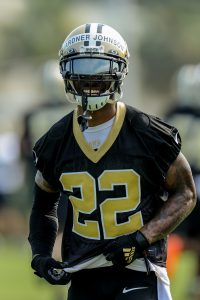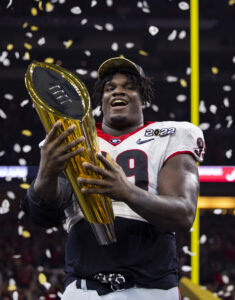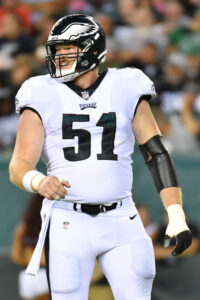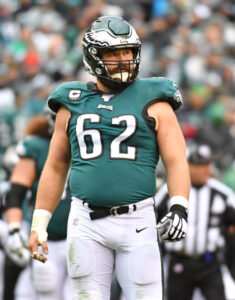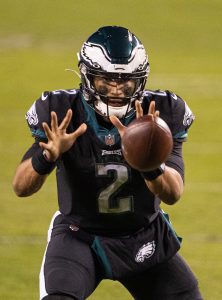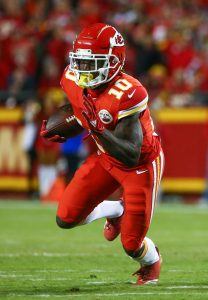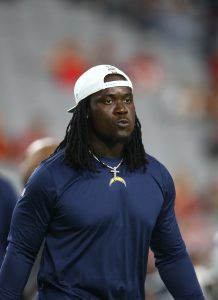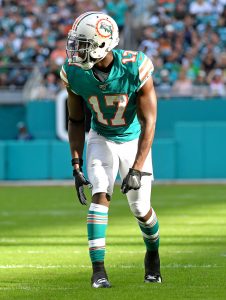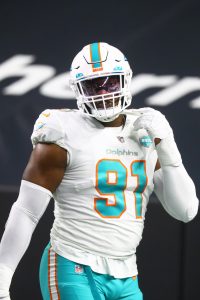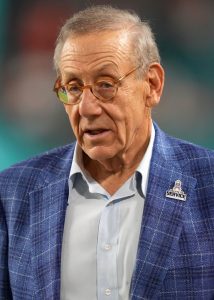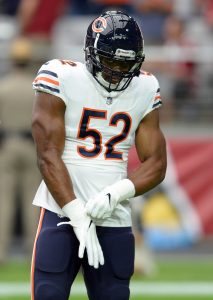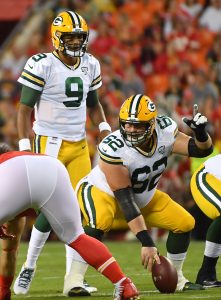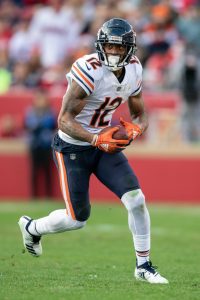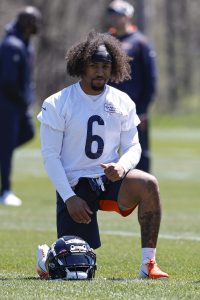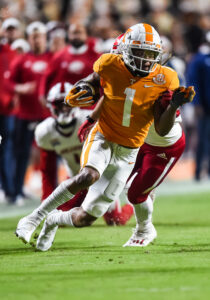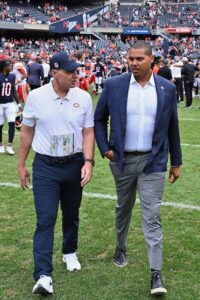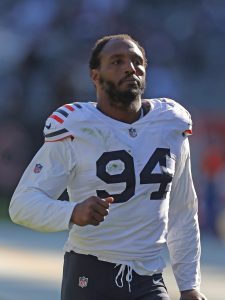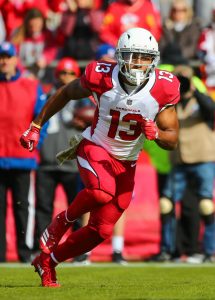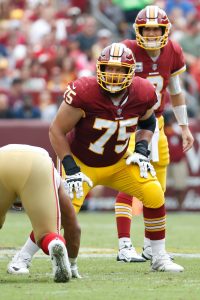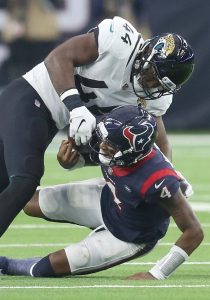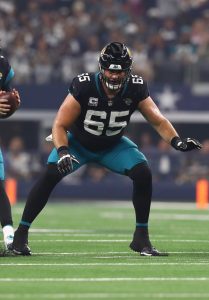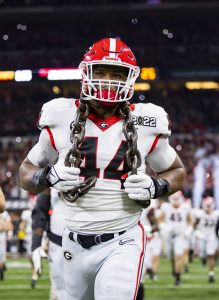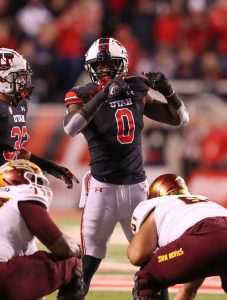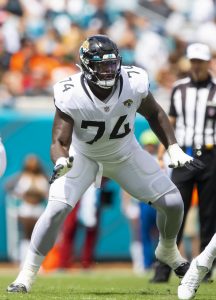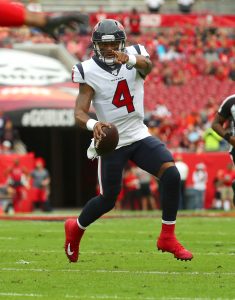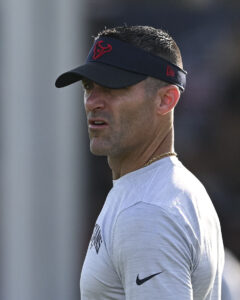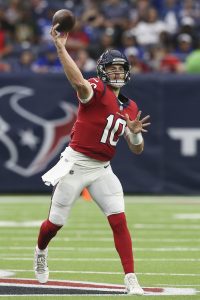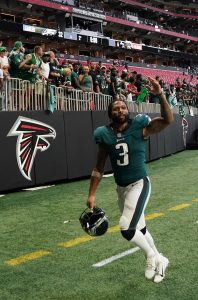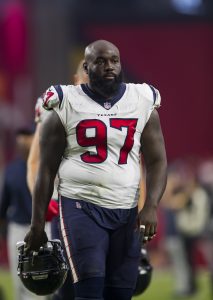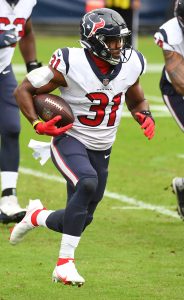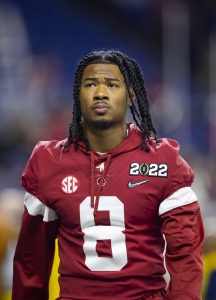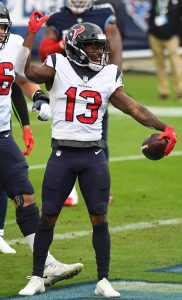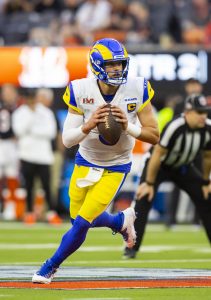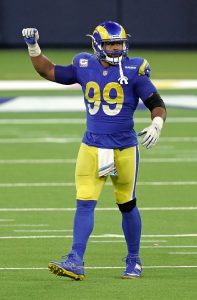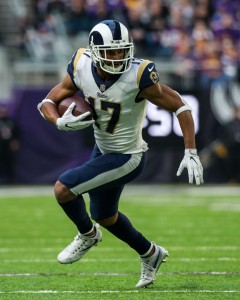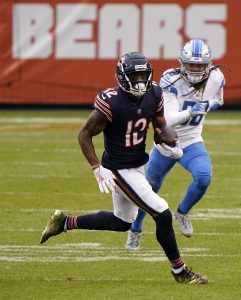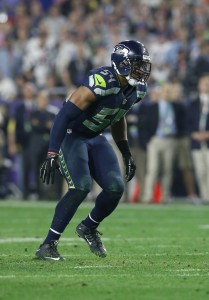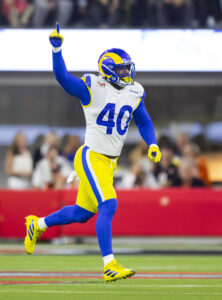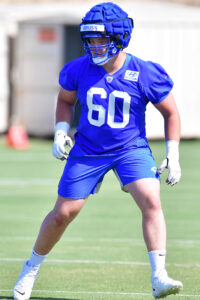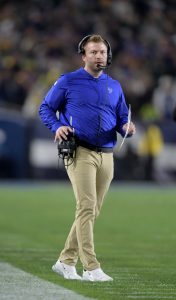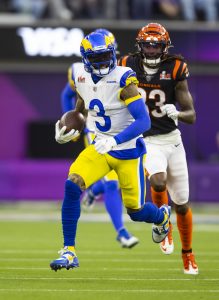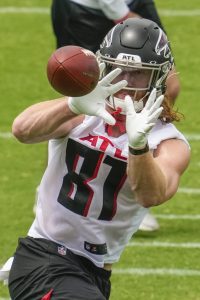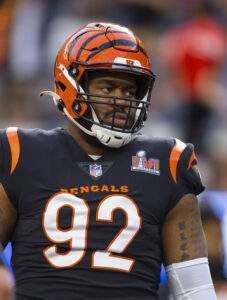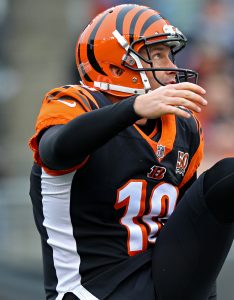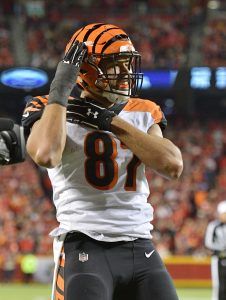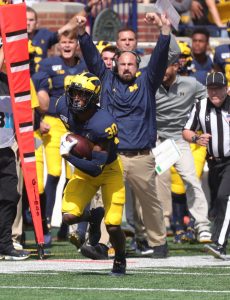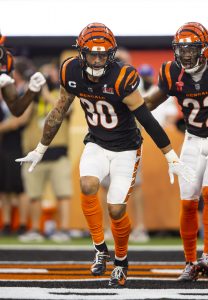Back to becoming a consistent Super Bowl threat in recent years, the Packers have remained unable to overcome perpetual postseason stumbling blocks. The team’s back-to-back No. 1 seeds from 2020-21 were a first in franchise history — with record-based home-field advantage only being introduced in the mid-1970s — but neither led to a Super Bowl berth. The Packers managed a third straight 13-win season but endured a divisional-round upset. Much has changed since, inviting big-picture questions.
Aaron Rodgers agreeing to stay in Green Bay marked the franchise’s most important offseason development, but the top weapon from his 13 years commanding the Packers’ offense leaving has brought scrutiny. The 38-year-old quarterback, who does not sound like he aims to follow in Tom Brady‘s footsteps by playing into his mid-40s, is now without his top two receivers from 2021. This late into the all-time great quarterback’s career, is this a Packers formula that will work?
Trades:
Adams contract issues came to a head this offseason. While the Packers momentarily kept the door open for a ninth Rodgers-Adams season by tagging the All-Pro wide receiver, their first tag usage in 12 years, GM Brian Gutekunst slammed it shut by agreeing to a trade that brought sweeping changes to the Packers’ passing attack and the receiver market. Previous Packers GM Ted Thompson did well to identify Adams’ potential by signing him to a $14MM-per-year accord in December 2017. That deal came months before Sammy Watkins‘ Chiefs contract brought a market correction. The receiver landscape stabilized for a bit in the years that followed, increasing incrementally, but Adams’ contract became quite Packers-friendly as it wound down. His $28MM-per-year Raiders pact triggered an avalanche.
 The Packers discussed a deal with Adams before the 2021 season, but the sides broke off talks. Failing to re-sign Adams before last season can be used against Gutekunst, but the wide receiver expressing hesitancy regarding another Green Bay contract for two quarterback-related reasons threw a wrench into the team’s relationship with its top Rodgers-era playmaker. Shortly after Rodgers’ April 2021 trade request, Adams said it factored into his own negotiations. This offseason, Adams said Rodgers’ future still mattered as he determined his own. Adams’ long-running interest in reuniting with Derek Carr (and vice versa) overshadowed all of this.
The Packers discussed a deal with Adams before the 2021 season, but the sides broke off talks. Failing to re-sign Adams before last season can be used against Gutekunst, but the wide receiver expressing hesitancy regarding another Green Bay contract for two quarterback-related reasons threw a wrench into the team’s relationship with its top Rodgers-era playmaker. Shortly after Rodgers’ April 2021 trade request, Adams said it factored into his own negotiations. This offseason, Adams said Rodgers’ future still mattered as he determined his own. Adams’ long-running interest in reuniting with Derek Carr (and vice versa) overshadowed all of this.
Green Bay out-offering Las Vegas for Adams and still seeing its star receiver opt for the Raiders represented an odd conclusion to this process — one that could impede the team’s latest run at a Super Bowl. Adams, 29, arrived in Vegas on the heels of five straight Pro Bowl invites, and he earned back-to-back first-team All-Pro nods for outings that obviously aided Rodgers’ two MVP honors.
Rodgers did plenty to boost Adams as well and has fared well without him in recent years. But the four-time MVP being stripped of this type of talent at this stage of his career will be a test. Adams missed time due to injuries over the course of his second contract, but the last time the Packers were without a No. 1-caliber Rodgers target for a full season was 2015. A March Adams trade and an August Jordy Nelson ACL tear are different matters, but Rodgers experienced a statistical dip that year — in the form of considerable drops in completion percentage, yards per attempt and QBR.
The Packers have had several months to adjust to Adams’ departure — one Rodgers knew was likely when he recommitted — and did package one of the trade assets to add a receiver piece (No. 34 overall pick Christian Watson). But this will be an interesting challenge and the kind of adjustment the Packer legend’s NFC QB rivals do not have to navigate this year.
Free agency additions:
Not typically big spenders on the market, the Packers continued that trend with a quiet spring regarding outside hires. Although O’Donnell leaving his Bears punting post of eight years for the Packers is interesting, Watkins and Reed’s Wisconsin pledges were the biggest news on this offseason front.
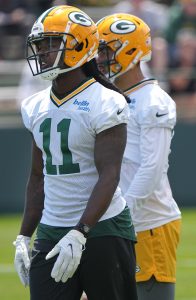 LaFleur worked as the Rams’ offensive coordinator during Watkins’ Los Angeles year (2017); Watkins played a career-high 15 games that season and helped the Rams snap a 13-year playoff drought. The former top-five Bills pick made some nice contributions, particularly in the 2019 postseason, during the Chiefs’ voyages to consecutive Super Bowls. But the one-time top prospect has not panned out as a pro. Watkins’ value drop from $16MM per year (Kansas City, 2018) to $5MM (Baltimore, 2021) to this reflects a player nearing his last chance. Watkins, 29, could potentially help the Packers as an auxiliary option. Asking the injury-prone target, who has topped 600 yards once in the past six seasons, to be a consistent contributor appears a bridge too far.
LaFleur worked as the Rams’ offensive coordinator during Watkins’ Los Angeles year (2017); Watkins played a career-high 15 games that season and helped the Rams snap a 13-year playoff drought. The former top-five Bills pick made some nice contributions, particularly in the 2019 postseason, during the Chiefs’ voyages to consecutive Super Bowls. But the one-time top prospect has not panned out as a pro. Watkins’ value drop from $16MM per year (Kansas City, 2018) to $5MM (Baltimore, 2021) to this reflects a player nearing his last chance. Watkins, 29, could potentially help the Packers as an auxiliary option. Asking the injury-prone target, who has topped 600 yards once in the past six seasons, to be a consistent contributor appears a bridge too far.
Even after adding Watkins, the Packers made runs at a few other veteran wideouts this offseason. They pursued Marquise Brown and Julio Jones and were linked to Deebo Samuel and DeVante Parker. It does not appear Samuel, who was most closely connected to the Jets, was a serious trade target. The Patriots landed Parker for a third-round pick, while it took a first (with a third coming back) for the Cardinals to nab Brown. It is understandable why the Packers stood down here, but the receiver links do point to the franchise remaining interested in veteran options. Until the Rams follow through on their incessant Odell Beckham Jr. reunion interest, the rehabbing star figures to stay on the Packers’ radar.
Reed refusing a 2021 Seahawks restructure, instead pushing for an extension, has sent him on a journeyman path. The Seahawks gave the defensive tackle a two-year, $23MM deal in 2020 but cut bait a year later. Reed signed a one-year, $5.5MM Chiefs pact in 2021 and could not command that this year. Still, the recent Chris Jones sidekick should help the Packers as a complementary inside pass rusher. Reed, 29, registered 10.5 sacks in 2018 and totaled 8.5 (counting two playoff sacks) two years later. He has not missed a game since his 2019 PED suspension and forced two fumbles last season. This could be a nice value signing for the Packers.
Re-signings:
As is frequently the case for the Packers, they did shell out some dough to retain their own UFAs. Both Campbell and Douglas boosted their stock by helping a depleted Packers team to the NFC’s No. 1 seed, and the team paid each nice money on the market. This was an easy place to look at where the Adams cash went.
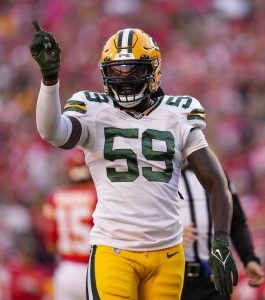 Campbell offered one of the more interesting breakthrough seasons in recent memory last year. The former Falcons fourth-round find morphed from a player Atlanta did not retain in 2020 to one Arizona also let walk after a modest contract (one year, $6MM) expired. The Packers nabbed Campbell in May 2021, on a one-year deal worth $2MM, and saw him become their first off-ball linebacker All-Pro in nearly 50 years. Campbell’s 146-tackle, two-forced fumble, two-INT, two-sack season graded behind only Micah Parsons among linebackers in 2021, per Pro Football Focus.
Campbell offered one of the more interesting breakthrough seasons in recent memory last year. The former Falcons fourth-round find morphed from a player Atlanta did not retain in 2020 to one Arizona also let walk after a modest contract (one year, $6MM) expired. The Packers nabbed Campbell in May 2021, on a one-year deal worth $2MM, and saw him become their first off-ball linebacker All-Pro in nearly 50 years. Campbell’s 146-tackle, two-forced fumble, two-INT, two-sack season graded behind only Micah Parsons among linebackers in 2021, per Pro Football Focus.
This does represent a significant deviation for the Packers, who had largely avoided off-ball linebacker investments post-A.J. Hawk. The Pack both signing Campbell and drafting Quay Walker swerves from that route. Campbell is only guaranteed his signing bonus, though roster bonuses of $3MM (2023) and $2.9MM (’24) are due on Day 3 of those league years. Still, this equates to an upper-middle-class linebacker deal.
Compared to his pre-Green Bay career trek (five teams from September 2020 to October 2021), Douglas securing a $7MM-per-year accord is a big win for the nomadic cornerback. Teams were still skeptical of Douglas’ breakout 2021, however, judging by his low guarantee figure. If Douglas’ 2021 (five INTs, two pick-sixes, an eye-catching 44.5 passer rating allowed as the closest defender) proves a mirage, the Packers can escape the contract in 2023. The team obviously hopes he can be a long-term contributor alongside first-rounders Jaire Alexander and Eric Stokes. Douglas, 28, is expected to patrol the slot for Green Bay, which let Chandon Sullivan sign with Minnesota.
Tonyan’s midseason ACL tear cost him dearly. Instead of the 2020 breakout performer capitalizing on two solid years as a Rodgers weapon, he had to settle for a low-end contract. Although Tonyan has just four years’ experience, he is already 28. With Week 1 availability uncertain, the stakes will be high for the ex-UDFA to deliver this season. His window to cash in is closing.
But the Packers have uncertain receiver situation. Tonyan’s nice, perhaps unsustainable, 11-touchdown 2020 season (a 52-catch, 586-yard campaign) still points to him being the Packers’ top tight end when healthy. That status still should point the Indiana State alum’s arrow upward, but Tonyan will need to prove himself again. Not doing so will call the team’s tight end plan into question.
Notable losses:
- Corey Bojorquez, P
- Dennis Kelly, T
- Kevin King, CB
- Tyler Lancaster, DL
- Whitney Mercilus, OLB (retired)
- David Moore, WR
- Lucas Patrick, OL
- Za’Darius Smith, OLB (released)
- Equanimeous St. Brown, WR
- Chandon Sullivan, CB
- Billy Turner, T (released)
- Marquez Valdes-Scantling, WR
Days after the Adams tag-and-trade transaction, Valdes-Scantling defected to the Chiefs. Prior to the AFC West gutting the Packers’ receiving corps, the NFC North champs tried to retain the deep threat. MVS ran into a slightly better market than he anticipated, expecting to sign a one-year deal in the $7-$10MM AAV range. The Chiefs guaranteed the four-year Packer contributor just $8.6MM, indicating Green Bay did not make a substantial offer to keep the former fifth-round pick.
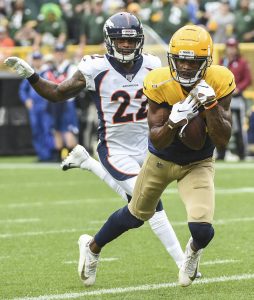 The Valdes-Scantling departure gave the Packers a unique offseason task, given their status as a top-shelf contender and employment of a quarterback legend approaching 39. The team is losing a wideout who dealt with sporadic drop issues but one who led the league in yards per catch (20.9) in 2020. Valdes-Scantling’s defection plunged the Packers into one of the more unusual receiver situations in recent NFL history. The two playmakers’ exits remove nearly 2,000 2021 receiving yards from Green Bay’s equation. This will move a lot onto the shoulders of Allen Lazard(career-high 513 receiving yards, eight TDs in 2021), with the team also likely to rely more on Aaron Jones‘ receiving abilities.
The Valdes-Scantling departure gave the Packers a unique offseason task, given their status as a top-shelf contender and employment of a quarterback legend approaching 39. The team is losing a wideout who dealt with sporadic drop issues but one who led the league in yards per catch (20.9) in 2020. Valdes-Scantling’s defection plunged the Packers into one of the more unusual receiver situations in recent NFL history. The two playmakers’ exits remove nearly 2,000 2021 receiving yards from Green Bay’s equation. This will move a lot onto the shoulders of Allen Lazard(career-high 513 receiving yards, eight TDs in 2021), with the team also likely to rely more on Aaron Jones‘ receiving abilities.
Considering the Packers’ Thompson-era strategy in free agency — largely avoiding it, save for some notable SFAs — Gutekunst’s 2019 Smith contract (four years, $66MM) raised eyebrows. The ex-Ravens contributor was coming off a promising 2018 season, but the Packers unlocked his potential. Smith soared to back-to-back Pro Bowls as a Packer and anchored the edge rush for two straight NFC championship game-bound teams, combining for 26 sacks from 2019-20. Smith’s 2021 back injury contributed to his Green Bay exit, but the team’s offseason contract restructure — which inflated the edge defender’s 2022 cap figure to $28.1MM — pointed him out the door anyway.
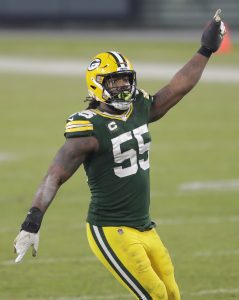 Smith’s early-season back surgery did preview the Packers’ current OLB configuration. Rashan Gary is now in place as Green Bay’s top edge player, with ex-Za’Darius sidekick Preston Smith set to flank him. It will be interesting to see if Za’Darius Smith can regain his previous form; the Vikings threw out a midlevel bet on him doing so. The Packers will surely see a motivated defender come Week 1. Ditto Sullivan, whom the Packers did not keep despite the Vikings needing only needing to pay $1.75MM to move him out of Green Bay. The team’s primary slot defender to start the 2020s, Sullivan surpassed the 70% snap barrier in each of the past two seasons.
Smith’s early-season back surgery did preview the Packers’ current OLB configuration. Rashan Gary is now in place as Green Bay’s top edge player, with ex-Za’Darius sidekick Preston Smith set to flank him. It will be interesting to see if Za’Darius Smith can regain his previous form; the Vikings threw out a midlevel bet on him doing so. The Packers will surely see a motivated defender come Week 1. Ditto Sullivan, whom the Packers did not keep despite the Vikings needing only needing to pay $1.75MM to move him out of Green Bay. The team’s primary slot defender to start the 2020s, Sullivan surpassed the 70% snap barrier in each of the past two seasons.
The coaches that left Wisconsin this offseason took some Packers role players with them. Nathaniel Hackett is eyeing Turner as his starting right tackle in Denver. One of several Packers O-linemen to miss time due to injuries last season, Turner saw time at guard and both tackle spots in three Green Bay seasons. His exit strips the Packers of more experience.
David Bakhtiari and Elgton Jenkins returning healthy would minimize the exits of Turner and Kelly, but we are a ways away from knowing the Packers O-line cogs’ respective 2022 availability. New Bears OC Luke Getsy pried Patrick, St. Brown and Moore. Primarily a guard, Patrick started 28 games for the Packers from 2020-21. If Jenkins and Bakhtiari are not back in Week 1, Green Bay will not feature much experience up front.
Extensions and restructures:
The Packers were busy on the extension front this offseason; their biggest deal produced multi-city fallout. The Broncos were linked to Rodgers for nearly a year, being the primary suitor in the event the once-disgruntled Packer ultimately wanted out. Not long after Rodgers’ Packers recommitment, the Broncos went with Plan B — a Russell Wilson trade that had not produced rumors nearly on the level the Rodgers-to-Denver scenario had. Although this process lingered up until the franchise tag deadline, seeming to coincide with Adams’ status, the Packers kept their cornerstone player. Just as he did with his 2013 ($22MM per year) and 2018 ($33.5MM AAV) extensions, Rodgers tops the quarterback market. Illustrating this positional market’s rapid growth, this re-up makes him the first $50MM-per-year NFLer.
Read more
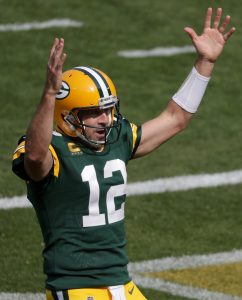 Rodgers’ contract features a signing bonus prorated to 2026 and roster bonuses. It has been interpreted in different ways. While SI.com’s Andrew Brandt classified it as a one-year, $42MM deal that leaves the door open for a Rodgers 2023 trade, Pro Football Talk’s Mike Florio called the odds of Rodgers playing elsewhere slim. Rodgers will be set to make a staggering $123.84MM by 2023. Dead-money charges would skyrocket to historic levels if this ultimately through-2024 contract does not lead to Rodgers playing that long. This somewhat complex deal did lead to a much calmer Packers offseason compared to the previous two, when the Jordan Love 2020 trade-up and a 2021 Rodgers trade request introduced the prospect of the latter not going wire-to-wire in Green Bay.
Rodgers’ contract features a signing bonus prorated to 2026 and roster bonuses. It has been interpreted in different ways. While SI.com’s Andrew Brandt classified it as a one-year, $42MM deal that leaves the door open for a Rodgers 2023 trade, Pro Football Talk’s Mike Florio called the odds of Rodgers playing elsewhere slim. Rodgers will be set to make a staggering $123.84MM by 2023. Dead-money charges would skyrocket to historic levels if this ultimately through-2024 contract does not lead to Rodgers playing that long. This somewhat complex deal did lead to a much calmer Packers offseason compared to the previous two, when the Jordan Love 2020 trade-up and a 2021 Rodgers trade request introduced the prospect of the latter not going wire-to-wire in Green Bay.
Rodgers made it no secret he wanted to leave town last year, citing issues with a front office that drafted his potential successor without warning. But Gutekunst, after agreeing to remove a year from Rodgers’ previous contract to lay the groundwork for a new one, did well to keep the car on the road. Soon after the agreement, the fifth-year GM said Rodgers finishing his career in Green Bay is the team’s preferred option. Weeks later, Rodgers said he will “definitely” retire a Packer. This relationship has gone through a lot over the past year and change, but it appears back on steady terrain.
Green Bay staying the course with Rodgers was obviously prudent. The NFL’s efficiency kingpin trails only Peyton Manning in MVPs (5-4) and first-team All-Pro honors (7-4) among post-merger quarterbacks. Over the course of his two 2020s MVP slates, Rodgers boasts an 85-9 TD-INT ratio. His ring count does not reflect the value he has brought to the Packers, whose past free agency hesitancy helped keep their quarterback’s Super Bowl appearance tally at one. While the veteran has certainly become a higher-maintenance player in recent years, his late-30s form offers the Packers nearly unmatched on-field security.
 Although Alexander became the NFL’s highest-paid cornerback on his $21MM-per-year extension, he accepted a Packers-style deal with no guaranteed money beyond the first year of the contract. Alexander’s guaranteed-at-signing figure ranks 12th among corners. The former first-round pick is not in danger of losing his job, though he is coming off an injury-abbreviated season. But this contract does not contain any additional injury guarantees, placing Alexander more than $40MM behind the league’s other $20MM-AAV corners (Jalen Ramsey, Denzel Ward) for guaranteed money.
Although Alexander became the NFL’s highest-paid cornerback on his $21MM-per-year extension, he accepted a Packers-style deal with no guaranteed money beyond the first year of the contract. Alexander’s guaranteed-at-signing figure ranks 12th among corners. The former first-round pick is not in danger of losing his job, though he is coming off an injury-abbreviated season. But this contract does not contain any additional injury guarantees, placing Alexander more than $40MM behind the league’s other $20MM-AAV corners (Jalen Ramsey, Denzel Ward) for guaranteed money.
The Packers did not have much of a chance to pair Alexander and Stokes, with Alexander’s shoulder malady occurring in Week 4. This extension pairs well with Stokes’ rookie contract, which, thanks to the fifth-year option, can run through 2025. Alexander will be in his 20s for the duration of his extension, arming Green Bay with potentially one of the better cornerback duos in recent NFL annals.
This is close to a pay-as-you-go deal with Preston Smith, who was a release candidate in 2021. Making Smith a post-June 1 cut next year would not even cost the Packers $5MM in 2023 dead money. Smith remained with the Packers last year by agreeing to convert some of his salary to incentives, but after the team’s higher-profile Smith was released, the Packers kept their more durable OLB vet. Preston Smith, 29, came through with a nine-sack season — after a down 2020 — last year and will benefit from the ascending Gary (47 pressures in 2021, fourth-most in the NFL). Smith did produce a 12-sack 2019, giving the Packers the potential to field strong duos at corner and on the edge.
Draft:
- 1-22: Quay Walker, LB (Georgia)
- 1-28: Devonte Wyatt, DT (Georgia)
- 2-34: Christian Watson, WR (North Dakota State)
- 3-92: Sean Rhyan, OL (UCLA)
- 4-132: Romeo Doubs, WR (Nevada)
- 4-140: Zach Tom, T (Wake Forest)
- 5-179: Kingsley Enagbare, DL (South Carolina)
- 7-228: Tariq Carpenter, LB (Georgia Tech)
- 7-234: Jonathan Ford, DT (Miami)
- 7-249: Rasheed Walker, T (Penn State)
- 7-258: Samori Toure, WR (Nebraska)
The Packers’ defense now houses seven first-round picks. The first of those is better positioned to be a Week 1 starter. Since Hawk went No. 5 overall in 2006, the Packers had not used a first- or second-round pick on an off-ball linebacker. Campbell’s contract falls outside the top 10 at the position; Walker will be expected to be a three-down player in Green Bay for much longer.
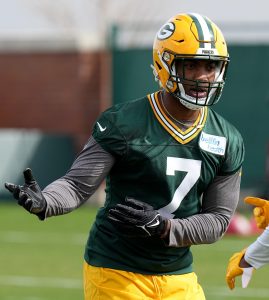 Walker will be tasked with helping Green Bay’s run defense, which ranked 30th in yards per carry allowed last season (4.7) and 28th in terms of third-down run conversions. At 6-foot-4, Walker certainly supplies intriguing length alongside the 6-3 Campbell. The former’s coverage chops will be tested, but the athleticism he displayed as a single-season Georgia starter (and the fact the Packers never invest highly in this position) points to upside as an all-around defender.
Walker will be tasked with helping Green Bay’s run defense, which ranked 30th in yards per carry allowed last season (4.7) and 28th in terms of third-down run conversions. At 6-foot-4, Walker certainly supplies intriguing length alongside the 6-3 Campbell. The former’s coverage chops will be tested, but the athleticism he displayed as a single-season Georgia starter (and the fact the Packers never invest highly in this position) points to upside as an all-around defender.
Jordan Davis‘ 4.78-second 40-yard dash offering overshadowed his Georgia teammate’s effort, but 4.77 at 307 pounds is rather impressive. Wyatt’s mark was the best Combine clocking among D-tackles. A potential-over-production prospect, Wyatt (12 tackles for loss in four college seasons) makes sense as a rotational chip for a deeper Packers defensive front. An interior D-line crew of Reed, Wyatt, Kenny Clark and Dean Lowry stands to create issues for offenses that must deal with one of the league’s better edge pairings as well.
This draft also provided perhaps the biggest reminder of the Packers’ first-round strategy re: wide receivers. Though the team was more aggressive in the second round — a draft sector that has produced Adams, Cobb, Nelson and Greg Jennings over the past 16 years — 20 years have now passed since the Pack last took a Round 1 wideout (Javon Walker). But the team did use one of the Adams picks to trade up — from No. 53 — for this draft’s seventh receiver off the board. Barring an addition, a lot could be on Watson’s shoulders as a rookie — Doubs’ early progress notwithstanding. Only one Rodgers-era rookie — Valdes-Scantling — has exceeded 500 receiving yards. That came with Adams around. Adams broke in with the likes of Nelson and Cobb entrenched. This year’s Packers receiver depth chart is not conducive to assimilation issues.
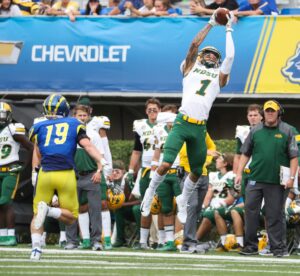 Watson’s size-speed combo (6-4, 4.37) entices, as do his 57 20-plus-yard plays with the Bison. But asking a Division I-FCS talent coming off a summer knee surgery to be an immediate contributor might be unrealistic. This would make Doubs’ growth paramount. Carson Strong‘s go-to target on the outside at Nevada, Doubs did not shine much during Senior Bowl week and fell to Day 3. But he dropped consecutive 1,000-yard slates at Nevada and has wowed observers at camp. The obvious late-round fantasy flier will double as an X-factor for a receiving corps that has seemed a man short — a thesis the team’s efforts to acquire the likes of Julio Jones or Hollywood Brown would support — throughout the offseason.
Watson’s size-speed combo (6-4, 4.37) entices, as do his 57 20-plus-yard plays with the Bison. But asking a Division I-FCS talent coming off a summer knee surgery to be an immediate contributor might be unrealistic. This would make Doubs’ growth paramount. Carson Strong‘s go-to target on the outside at Nevada, Doubs did not shine much during Senior Bowl week and fell to Day 3. But he dropped consecutive 1,000-yard slates at Nevada and has wowed observers at camp. The obvious late-round fantasy flier will double as an X-factor for a receiving corps that has seemed a man short — a thesis the team’s efforts to acquire the likes of Julio Jones or Hollywood Brown would support — throughout the offseason.
Backups became regular starters up front for the Packers in 2021, and the statuses of Bakhtiari and Jenkins concern. Bakhtiari’s third knee surgery since his New Year’s Eve 2020 ACL tear putting his Week 1 status in question comes in a year in which Jenkins, who suffered a November ACL tear, might not be ready on time. These developments introduce the prospect of more O-line chaos. Rhyan and Tom will be needed as depth pieces, at the very least.
Other:
Tied to Rodgers’ brilliance, LaFleur has seen that attachment limit him in terms of recognition. But Rodgers’ 2018 and ’19 seasons brought his two worst QBR figures. LaFleur’s offense has benefited the Packers’ centerpiece player, with across-the-board statistical jumps in Years 2 and 3 of this partnership. LaFleur helming a 2021 Packers squad that was down its top two O-linemen, most accomplished top pass rusher and best cover man did not result in Coach of the Year honors, but it marked his best work to date.
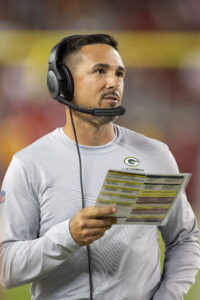 Green Bay’s Sean McVay tree branch also did not have a good day in the 2020 NFC championship tilt. LaFleur’s offense submitting a divisional-round dud last season did not help his cause, either. But after the Packers had gone 6-9-1 in a 16-game Rodgers season in 2018, this has been a good hire. LaFleur’s 39 wins over his first three seasons broke George Seifert‘s all-time record to start a coaching tenure, and the latter certainly inherited a better foundation in San Francisco.
Green Bay’s Sean McVay tree branch also did not have a good day in the 2020 NFC championship tilt. LaFleur’s offense submitting a divisional-round dud last season did not help his cause, either. But after the Packers had gone 6-9-1 in a 16-game Rodgers season in 2018, this has been a good hire. LaFleur’s 39 wins over his first three seasons broke George Seifert‘s all-time record to start a coaching tenure, and the latter certainly inherited a better foundation in San Francisco.
Perhaps until Rodgers returns to a Super Bowl, Gutekunst will be more known for drawing the quarterback’s ire than his GM accomplishments. Gutekunst, 49, is battling uphill on his Love trade-up decision and attempting an unconventional plan to replace the best Packer wide receiver in nearly 30 years. But the longtime Packer exec-turned-GM has been more aggressive than his successful but conservative predecessor. That has helped the Packers to three straight playoff byes. The Smiths, Turner and Adrian Amos provided upgrades, while lower-tier additions Campbell and Douglas made vital contributions for last season’s undermanned team.
 The Love pick can be judged harshly, as this is not a good way to use a first-round QB contract. But Alexander, Jenkins and Gary have become cornerstone players. Rodgers, of course, props up execs’ performance levels, too, but going into the 2019 season, Green Bay had not won 13 games since 2011. The team is 3-for-4 in clearing that bar under Gutekunst.
The Love pick can be judged harshly, as this is not a good way to use a first-round QB contract. But Alexander, Jenkins and Gary have become cornerstone players. Rodgers, of course, props up execs’ performance levels, too, but going into the 2019 season, Green Bay had not won 13 games since 2011. The team is 3-for-4 in clearing that bar under Gutekunst.
Hackett tried to poach Stenavich and wide receivers coach Jason Vrable to be his right-hand man on offense in Denver, making it notable his apparent third choice — Outten — is in that post. The Packers’ performance sans Bakhtiari, Jenkins and other O-line starters at points throughout last season reflected well on Stenavich’s acumen. Clements, 69, was with the Packers from 2006-16. Rodgers asking the veteran assistant to come out of retirement, before it was known he would stay in Green Bay, was rather telling about the quarterback’s plans. The Pack losing both Hackett and Getsy will be a test for LaFleur, who enjoyed solid offensive-staff continuity to start his HC tenure.
Top 10 cap charges for 2022:
- Aaron Rodgers, QB: $28.54MM
- David Bakhtiari, T: $13.42MM
- Preston Smith, OLB: $11.46MM
- Kenny Clark, DL: $9.98MM
- Dean Lowry, DL: $8.1MM
- Adrian Amos, S: $7.28MM
- Jaire Alexander, CB: $7.1MM
- Aaron Jones, RB: $5.5MM
- Rashan Gary, OLB: $5.1MM
- Mason Crosby, K: $4.74MM
The NFC’s top tier consists of three all-in teams, but the Packers — their 2010 title notwithstanding — differ from the Rams and Buccaneers regarding recent playoff accomplishments. As reliable as the Packers have been under LaFleur, postseason underachievement has defined his tenure — just as it did much of Mike McCarthy‘s. Last season’s roster looked better than this year’s Packers, but injuries intervened. Can Rodgers and a top-end defensive nucleus compensate for potential O-line and pass catcher issues to vault this retooled team over January hurdles this time around?
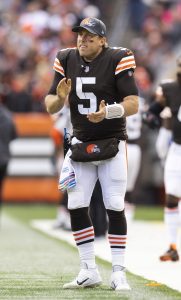 With Mitchell Trubisky off to Pittsburgh, the Bills needed a backup for Josh Allen. The team opted for Case Keenum, acquiring the veteran QB from the Browns for a seventh-round pick. The former starter served as a backup to Baker Mayfield over the past two seasons in Cleveland, with the Browns winning each of his two starts with the franchise. Keenum will slide in between Allen and Matt Barkley (who is currently stashed on the practice squad) on the depth chart.
With Mitchell Trubisky off to Pittsburgh, the Bills needed a backup for Josh Allen. The team opted for Case Keenum, acquiring the veteran QB from the Browns for a seventh-round pick. The former starter served as a backup to Baker Mayfield over the past two seasons in Cleveland, with the Browns winning each of his two starts with the franchise. Keenum will slide in between Allen and Matt Barkley (who is currently stashed on the practice squad) on the depth chart. Rams that saw him earn his second Super Bowl ring, Miller inked a $120MM deal to help guide the Bills to at least their first AFC Championship win since 1993. Miller, 33, missed the entire 2020 season and suffered a midseason injury to close out his Broncos tenure in 2021. However, following his midseason trade, he bolstered his value considerably with the Rams, recording nine sacks across the team’s final eight games, including two in Super Bowl LVI. His championship pedigree and pass-rushing ability should go a long way in Buffalo, and while the significant investment is certainly risky considering the edge rusher’s age and recent injury history, it’ll all be worth it if he leads the Bills to the promised land.
Rams that saw him earn his second Super Bowl ring, Miller inked a $120MM deal to help guide the Bills to at least their first AFC Championship win since 1993. Miller, 33, missed the entire 2020 season and suffered a midseason injury to close out his Broncos tenure in 2021. However, following his midseason trade, he bolstered his value considerably with the Rams, recording nine sacks across the team’s final eight games, including two in Super Bowl LVI. His championship pedigree and pass-rushing ability should go a long way in Buffalo, and while the significant investment is certainly risky considering the edge rusher’s age and recent injury history, it’ll all be worth it if he leads the Bills to the promised land.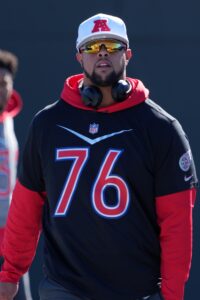 On offense, the team’s most notable changes came to their offensive line, with Rodger Saffold and David Quessenberry expected to slide into the starting lineup. Saffold has started 157 games during his 12-year career, and he earned his first career Pro Bowl nod in 2021 after starting 15 games for the Titans. PFF ended up ranking the veteran 31st among 82 qualifying offensive guards in 2022, and they gave him a particularly high grade on his run-blocking ability. Saffold ranked in or close to the top-10 in previous seasons, so it remains to be seen if the drop in 2021 was just an off year or an indication that age is catching up to him. Quessenberry also comes over from Tennessee following a 2021 campaign where he started a career-high 17 games. PFF was fond of his performance, ranking him 18th among 83 qualifying offensive tackles. Securing the duo on one-year pacts was a major win for the Bills. Greg Van Roten provides the team with some additional starting experience on the offensive line, with the veteran expected to serve as Buffalo’s swing guard.
On offense, the team’s most notable changes came to their offensive line, with Rodger Saffold and David Quessenberry expected to slide into the starting lineup. Saffold has started 157 games during his 12-year career, and he earned his first career Pro Bowl nod in 2021 after starting 15 games for the Titans. PFF ended up ranking the veteran 31st among 82 qualifying offensive guards in 2022, and they gave him a particularly high grade on his run-blocking ability. Saffold ranked in or close to the top-10 in previous seasons, so it remains to be seen if the drop in 2021 was just an off year or an indication that age is catching up to him. Quessenberry also comes over from Tennessee following a 2021 campaign where he started a career-high 17 games. PFF was fond of his performance, ranking him 18th among 83 qualifying offensive tackles. Securing the duo on one-year pacts was a major win for the Bills. Greg Van Roten provides the team with some additional starting experience on the offensive line, with the veteran expected to serve as Buffalo’s swing guard.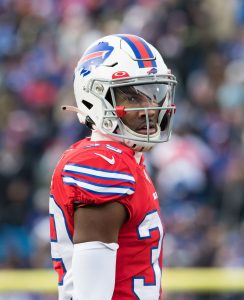 Levi Wallace can’t match his now-former teammate Tre’Davious White‘s impact on defense, but he still started each of his 45 games over the past three seasons. Former seventh-round pick Dane Jackson seems to be the best bet to temporarily replace Wallace in the starting lineup, but rookie first-round pick Kaiir Elam should eventually slide in opposite White. Free agent signing DaQuan Jones is expected to slide in at defensive tackle next to Ed Oliver, replacing Harrison Phillips and Star Lotulelei, who basically split that role in 2021. A.J. Klein saw a reduced role during his second season in Buffalo, and after starting only four games in 2021, he earned his walking papers.
Levi Wallace can’t match his now-former teammate Tre’Davious White‘s impact on defense, but he still started each of his 45 games over the past three seasons. Former seventh-round pick Dane Jackson seems to be the best bet to temporarily replace Wallace in the starting lineup, but rookie first-round pick Kaiir Elam should eventually slide in opposite White. Free agent signing DaQuan Jones is expected to slide in at defensive tackle next to Ed Oliver, replacing Harrison Phillips and Star Lotulelei, who basically split that role in 2021. A.J. Klein saw a reduced role during his second season in Buffalo, and after starting only four games in 2021, he earned his walking papers.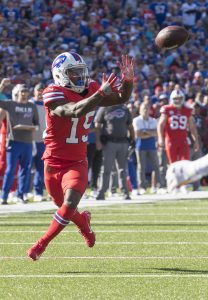 While the Bills had a long list of departed free agents, they did make sure to retain a handful of players. After inking a one-year deal to stick in Buffalo during the 2021 season, Isaiah McKenzie got a two-year pact this time around. The wideout hasn’t put up big numbers during his three-plus seasons in Buffalo, and his 2021 campaign was actually his worst in regards to counting stats (20 receptions, 178 receiving yards, one touchdown). However, the team clearly believes in his talent, and he’ll be counted on to contribute in 2022 following the departures of Cole Beasley and Emmanuel Sanders.
While the Bills had a long list of departed free agents, they did make sure to retain a handful of players. After inking a one-year deal to stick in Buffalo during the 2021 season, Isaiah McKenzie got a two-year pact this time around. The wideout hasn’t put up big numbers during his three-plus seasons in Buffalo, and his 2021 campaign was actually his worst in regards to counting stats (20 receptions, 178 receiving yards, one touchdown). However, the team clearly believes in his talent, and he’ll be counted on to contribute in 2022 following the departures of Cole Beasley and Emmanuel Sanders.



